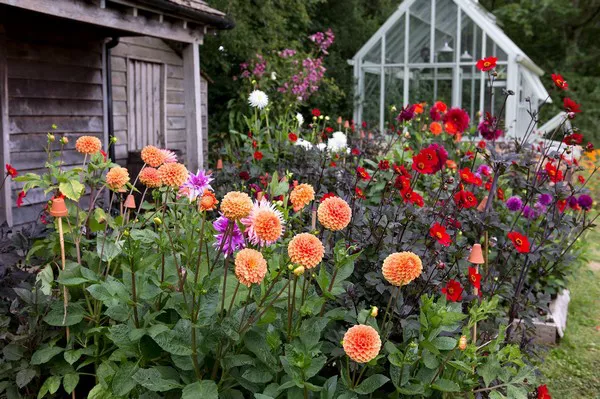Mosquitoes are not only irritating pests that disrupt outdoor activities, but they can also pose serious health risks by transmitting diseases such as malaria, dengue fever, and Zika virus. While flower beds may seem like tranquil spaces for garden enthusiasts, they can also serve as breeding grounds for mosquitoes if not properly managed. However, with the right approach, it’s possible to control and eliminate mosquitoes in flower beds effectively. In this comprehensive guide, we will explore various strategies and techniques to help you reclaim your flower beds from these pesky insects.
Understanding the Mosquito Lifecycle
Before delving into control methods, it’s crucial to understand the lifecycle of mosquitoes. Mosquitoes undergo four distinct stages: egg, larva, pupa, and adult. Female mosquitoes lay their eggs in stagnant water, where they hatch into larvae. Larvae feed on organic matter in the water and eventually transform into pupae. After a brief period, adult mosquitoes emerge from the pupal stage and seek out hosts for blood meals, necessary for egg production. By targeting specific stages of the mosquito lifecycle, we can effectively disrupt their breeding and population growth.
1. Remove Standing Water
One of the most effective ways to control mosquitoes in flower beds is to eliminate their breeding sites. Mosquitoes require stagnant water to lay their eggs, so removing any standing water from your flower beds is paramount. Check for areas where water tends to accumulate, such as saucers under flower pots, clogged gutters, or low-lying areas where rainwater collects. Ensure that flower pots and containers have proper drainage to prevent water from pooling. Additionally, regularly empty bird baths and change the water in outdoor pet bowls to discourage mosquito breeding.
2. Maintain Proper Drainage
In addition to removing standing water, it’s essential to ensure that your flower beds have adequate drainage. Poor drainage can create puddles and waterlogged soil, providing ideal conditions for mosquito breeding. Improve soil drainage by incorporating organic matter such as compost and mulch into the soil. Avoid overwatering plants, as excess moisture can lead to stagnant water accumulation. Consider installing French drains or trenching to redirect water away from flower beds, further reducing the likelihood of mosquito breeding.
3. Introduce Mosquito-Eating Fish
For flower beds with decorative ponds or water features, introducing mosquito-eating fish can be an effective biological control method. Certain species of fish, such as Gambusia affinis (mosquito fish) and goldfish, feed on mosquito larvae and pupae, effectively reducing mosquito populations in aquatic habitats. These fish are low-maintenance and can coexist harmoniously with ornamental plants in flower beds. However, ensure that the fish species you choose are suitable for your climate and water conditions, and avoid introducing non-native species that may disrupt local ecosystems.
4. Utilize Natural Repellents
Natural repellents can be an eco-friendly way to deter mosquitoes from your flower beds without harming beneficial insects or plants. Planting mosquito-repelling herbs and flowers can create a natural barrier against these pests. Some effective options include citronella, lavender, marigolds, basil, and rosemary. These plants emit fragrances that mosquitoes find unpleasant, helping to keep them at bay. Additionally, consider incorporating essential oils derived from mosquito-repelling plants into homemade repellent sprays or diffusers to further enhance their effectiveness.
5. Employ Physical Barriers
Creating physical barriers can prevent mosquitoes from accessing flower beds and resting areas. Install fine mesh screens or mosquito netting around outdoor seating areas or patio spaces to block mosquitoes from entering. For raised flower beds or containers, consider placing a layer of gravel or coarse sand on the soil surface to discourage mosquitoes from laying their eggs. Furthermore, strategically placing oscillating fans near flower beds can disrupt mosquito flight patterns, making it difficult for them to land and feed.
6. Implement Biological Controls
Biological control methods involve using natural predators or microbial agents to target mosquito populations. Bacillus thuringiensis (Bt) is a naturally occurring soil bacterium that produces toxins lethal to mosquito larvae when ingested. Bt-based larvicides are available in various formulations, including granules and dunks, which can be applied to standing water in flower beds to kill mosquito larvae effectively. Another biological control option is to introduce predatory insects such as dragonflies and damselflies, which feed on adult mosquitoes in flight.
7. Consider Chemical Treatments
While chemical insecticides should be used as a last resort due to their potential environmental impact, they can be effective in controlling severe mosquito infestations. Insecticides containing pyrethroids or organophosphates can be applied as sprays or foggers to target adult mosquitoes resting in flower beds and surrounding vegetation. However, exercise caution when using chemical treatments and follow label instructions carefully to minimize risks to beneficial insects, pets, and wildlife. Consider consulting with a pest control professional for guidance on selecting and applying insecticides safely.
8. Practice Regular Maintenance
Consistent maintenance practices can help prevent mosquito infestations from recurring in flower beds. Remove weeds, leaf litter, and other debris that can provide hiding places for adult mosquitoes. Trim overgrown vegetation and shrubs to reduce resting sites and improve airflow. Routinely inspect flower beds for signs of mosquito breeding, such as standing water or larvae, and take prompt action to address any issues. By staying vigilant and proactive, you can maintain mosquito-free flower beds throughout the growing season.
Conclusion
Effectively eliminating mosquitoes from flower beds requires a multifaceted approach that targets both larvae and adults while minimizing harm to beneficial organisms and the environment. By understanding the mosquito lifecycle and implementing a combination of preventive measures, natural remedies, and targeted controls, you can significantly reduce mosquito populations and enjoy your outdoor spaces without the nuisance of these bloodsucking pests. Remember to prioritize sustainable practices and choose methods that align with your gardening philosophy for long-term mosquito control success.


